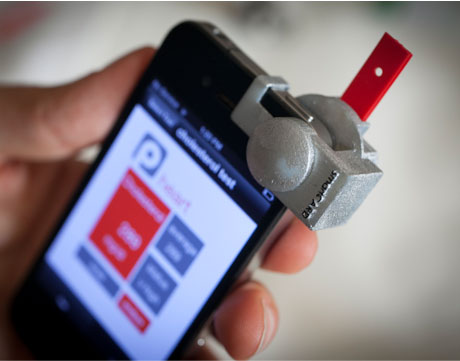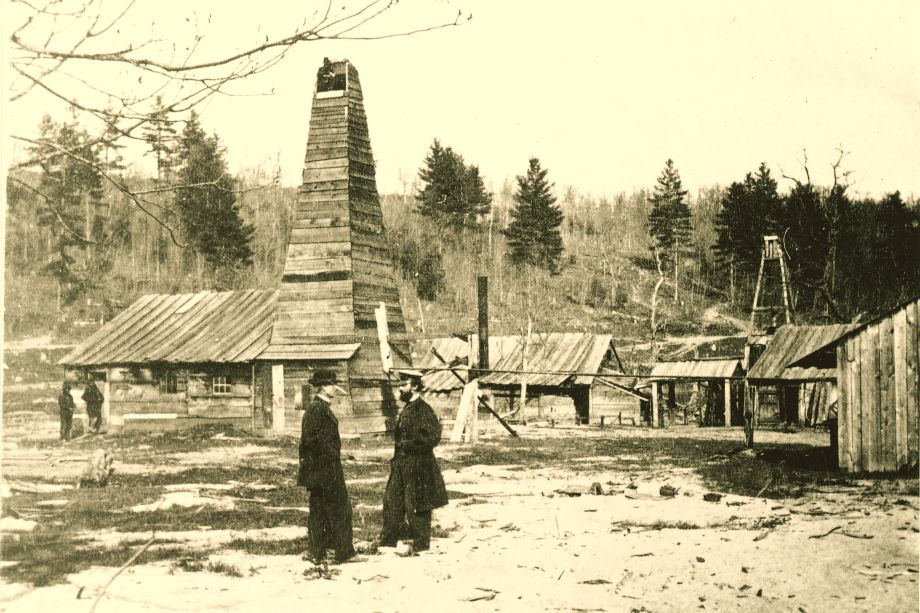An App Can Check Cholesterol
An App Can Check Cholesterol


The smartCARD system optically detects biomarkers in a drop of blood, sweat, or saliva. Image: Cornell University
Today you can monitor your heart rate, take your blood pressure, check your glucose, and also test your eye sight, using smartphone apps or attachments. Now you will also be able to read your cholesterol level, using a device developed by Cornell engineers.
The Smartphone Cholesterol Application for Rapid Diagnostics, or “smartCARD,” is developed by David Erickson, associate professor of mechanical engineering and his colleagues at Cornell University. The smartCARD accessory optically detects biomarkers in a drop of blood, sweat, or saliva. An app then discerns the results using color analysis.
“The test takes about a minute from the time when one puts a drop of blood on the test strip,” says Erickson. When a user puts a drop of blood on the cholesterol test strip, it processes the blood through separation steps and chemical reactions. The strip is then ready for colorimetric analysis by the smartphone app.
Accurate Results
The advantages of doing this over a phone are the convenience and ease of use, says Erickson, “Everyone already knows how to use a smartphone.” The smartCARD accessory clamps over the phone’s camera. Its built-in flash provides uniform, diffused light to illuminate the test strip that fits into the smartCARD reader. The application in the phone calibrates the hue saturation to the image’s color values on the cholesterol test strip, and the results appear on your phone.
With many years of experience in molecular diagnostics behind him, Erickson acknowledges that the technology was very difficult to deploy to the consumer level earlier. “Several years ago, when it became obvious that smartphones will become omnipresent across the world, we started looking at ways we could adapt that technology with the smartphone ecosystem.”
The smartCARD reader is a result of Erickson’s extensive collaboration with nutrition scientists, electrical engineers, and bioengineers. “We already have an established market of people using home-based cholesterol diagnostics devices but this technology breaks out of the business model that those types of devices are based on.”
“The devices we have shown in our paper (published in the journal Lab on a Chip) are equivalently accurate,” he says. Currently, the test measures total cholesterol. Erickson and his colleagues are working to break out those numbers in LDL (“bad” cholesterol), HDL (“good” cholesterol), and triglyceride measurements. They are also working on detecting vitamin D and B12 levels and developing nutritional markers. “There is going to be a broad swath available,” says Erickson.
Diagnostics for Developing World
Other smartphone-based diagnostic devices, such as the one developed by Dr. Aydogan Ozcan of UCLA's School of Engineering and Applied Science that enables the imaging of objects at nanoscale, highlight the efforts being made to bring diagnostic options to the developing world.
Erickson envisions a huge potential for smartphone-based low-cost diagnostics in the developing world and going forward he is also considering cancer-based diagnostics for those regions, “It seems very clear to me that mobile health is the next big thing. Tapping into the mobile network in those areas can be very impactful.”
The smartCARD, says Erickson is ready to be brought to market immediately, adding that when the reader hits the market, the cost will be significantly lower than what exists now. “We can meet the state of the art in accuracy and beat the state of the art in cost and variability.”
Listen to a podcast with Prof. David Erickson discussing the challenges of developing smartphone-based diagnostics applications.
We can meet the state of the art in accuracy and beat the state of the art in cost and variability.Prof. David Erickson, Cornell University



